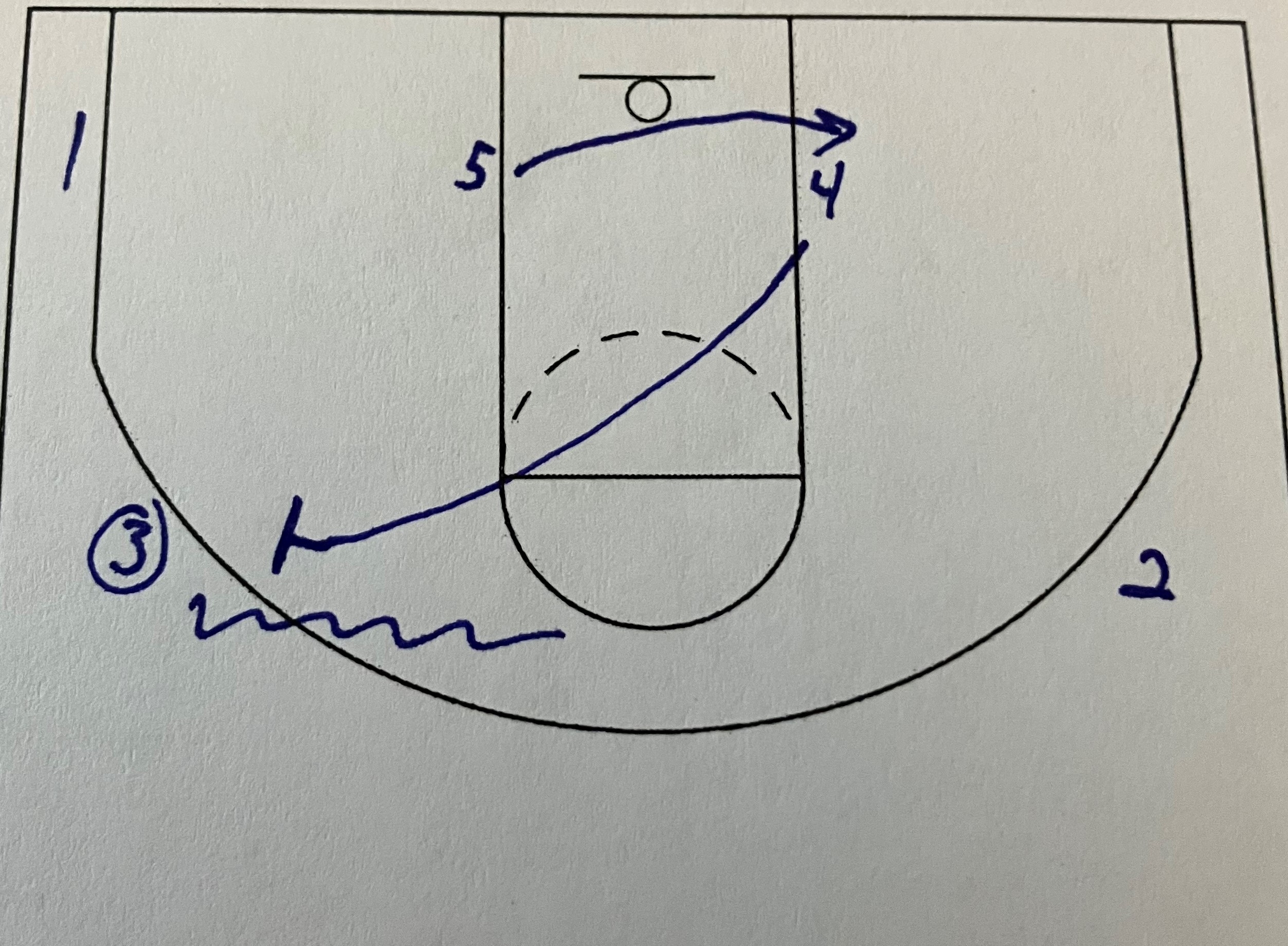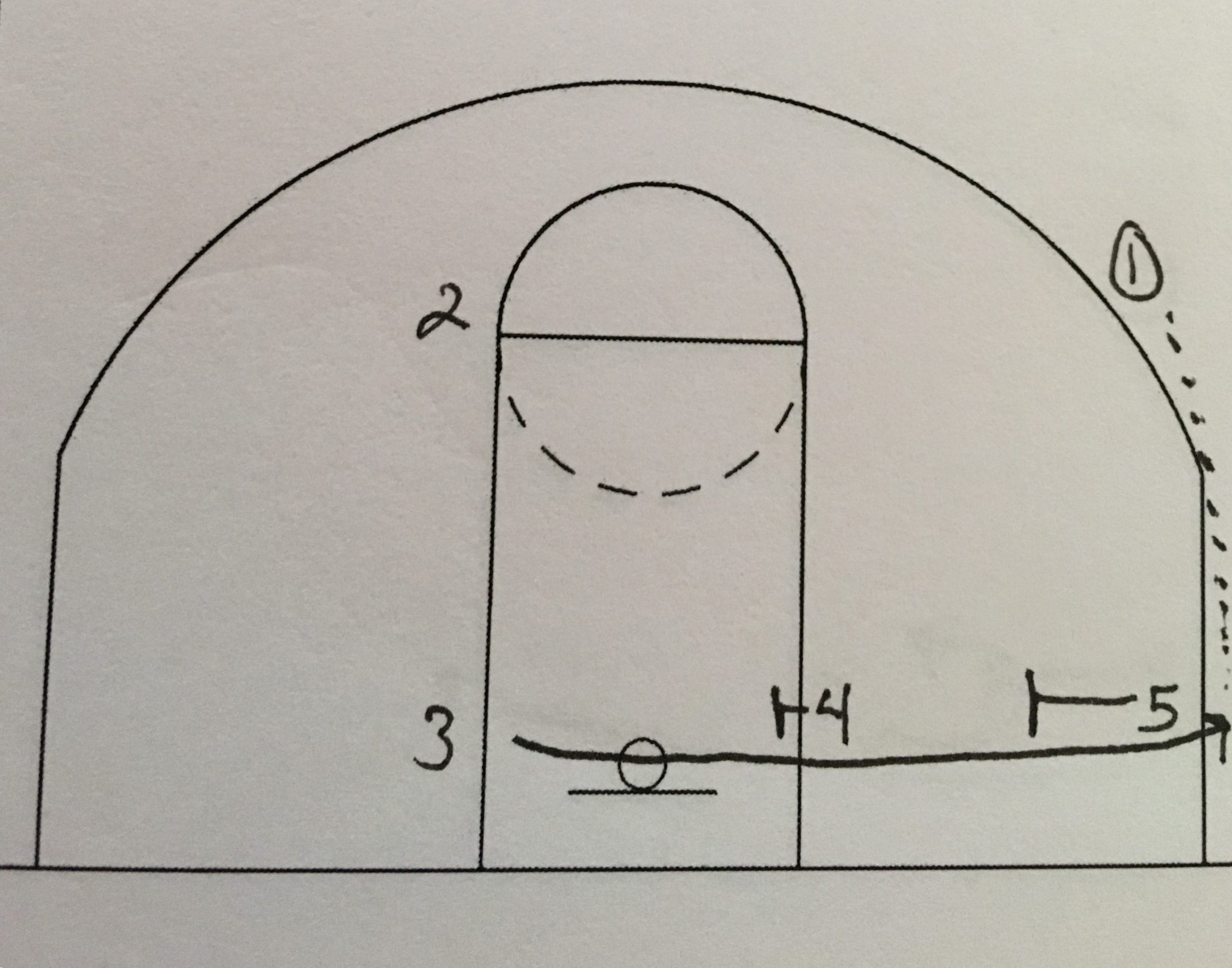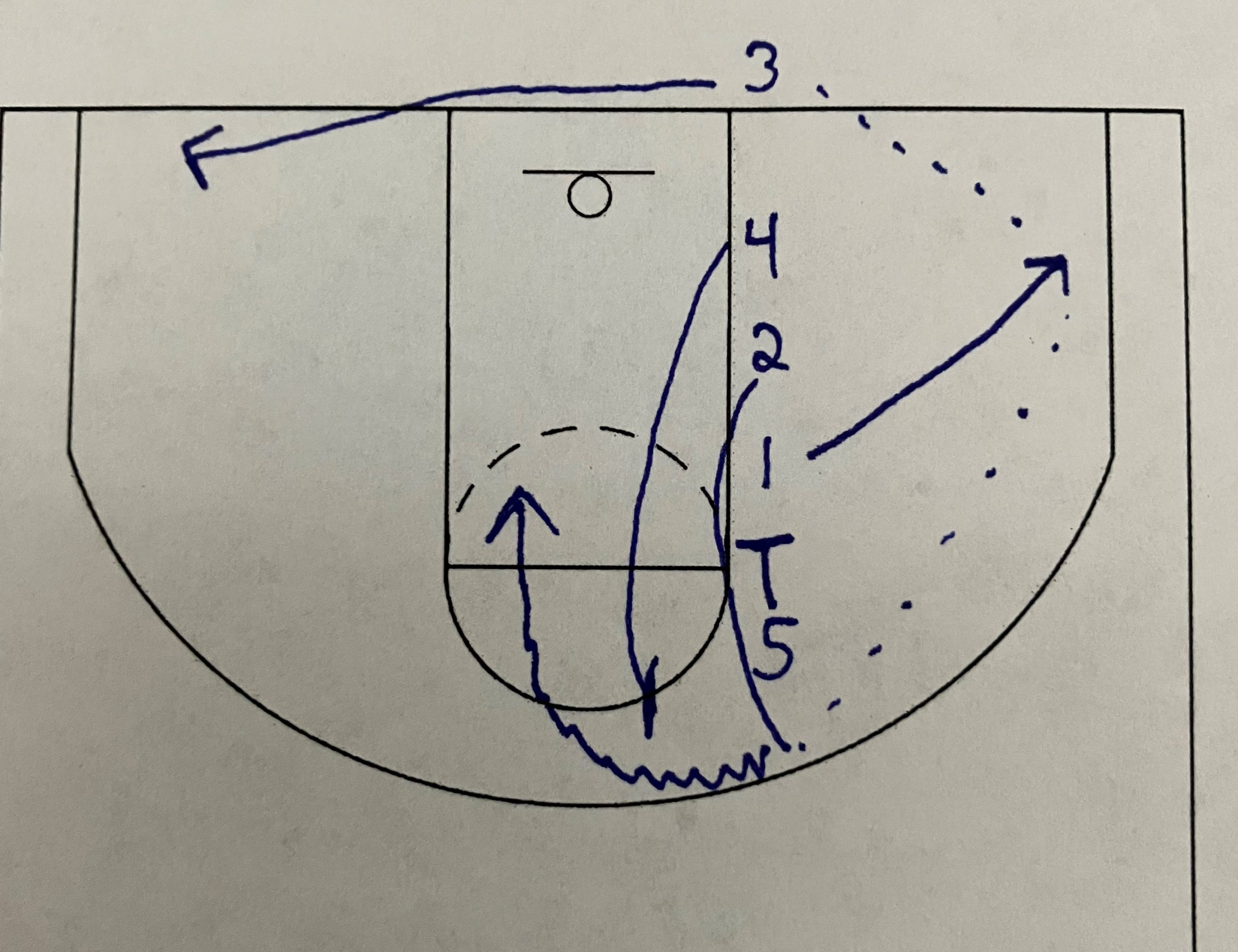One of the ways a coach can get a post player isolated is to have some kind of misdirection and then have the post entry pass right after the misdirection. When an offense can occupy the post defender with the misdirection then it makes it even easier to get the post entry pass completed. Here is a play where the post defender needs to help. Right after the help, the offense is able to get a post entry pass while the post defender is recovering from the help.
This play has everybody moving with a job to do. Every defender has to be engaged. Any breakdown by a defender can and will lead to an opening for the offense. This play is putting a lot of pressure on every defender to remain solid defensively. Any laziness or missed assignment gives the offense the opening it needs to score.

This play starts in a 3-out 2-in setup just like Quick Hitter #23. The point(1) passes the ball to the forward(3) and cuts to the ballside corner.
This play can be ran to either side. If the point(1) would pass to the guard(2) then all of the movements in the diagrams will be reversed.
The initial pass is going to set which post player is going to be isolated. If a team has two good back to the basket post players then it will not matter which side of the court the initial pass is entered into. However, if one post player is a better post-up option then the ball needs to be passed to their side. In the diagram above, the pass to the forward(3) sets into motion the center(5) being the post player getting the isolation.

The 2nd part of the play has both the post players moving. The big(4) is coming across the court to set a ball screen for the forward(3).
The center(5) is moving across the lane away from the ball. They should start to get themselves into a good position to get a good seal for the entry pass that will eventually come from the guard(2).
The standard defensive rules are now being used against the defense. The center(5)’s defender is the next help defender on the pick and roll. They will normally take a step or two towards the ball screen in order to be in better position to help if needed.
The forward(3) is coming off of the ball screen looking to score. The ball screen is the 1st chance to score the ball. I want the forward(3) looking to score and only if they are unable to score should the play move to the next phase.
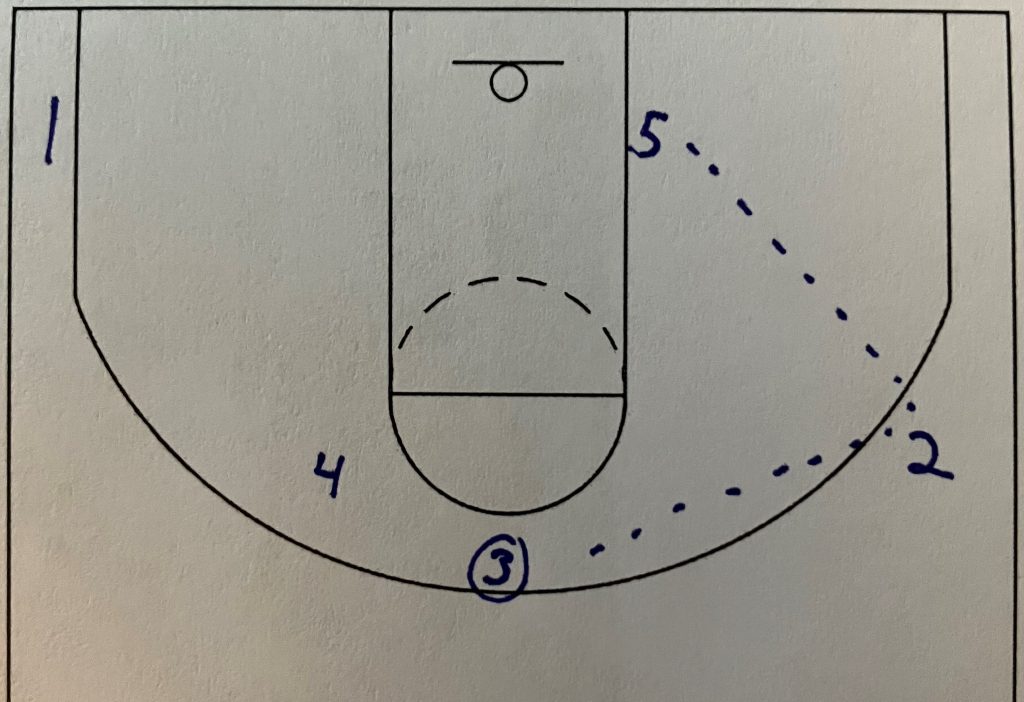
Once the ball screen is stopped, the forward(3) is passing the ball out to the guard(2). This is where the center(5)’s defender being the next help defender causes problems. If the center(5)’s defender has to step into the middle of the lane, the pass from the guard(2) into the center(5) becomes easier because the defender is recovering from their help in the middle of the lane.
A quick two passes from the forward(3) to the guard(2) and into the center(5) gives the center(5) the ability to catch and make a quick move to score. This entire play is designed to get the ball into the center(5) to score in the post. The ball screen can score but the post isolation for the center(5) is what this play is ultimately trying to get.
If the post entry pass is not able to be made, then the play has a last counter to still try and get an open shot.
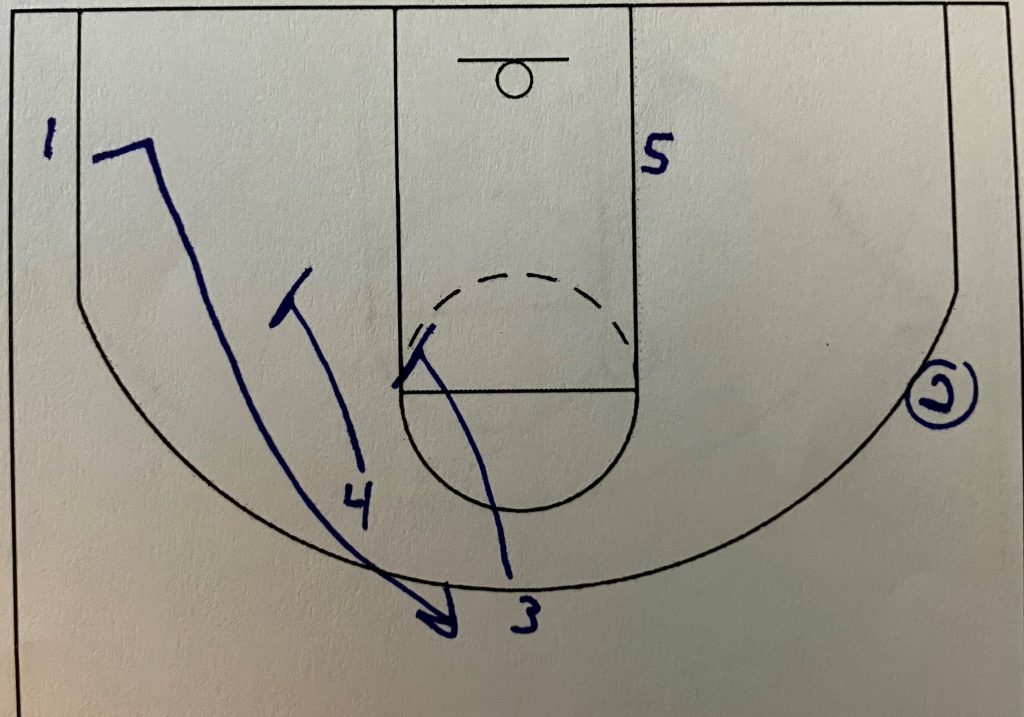
As a last resort, the forward(3) and big(4) are setting a stagger screen to bring the point(1) back to the top of the key for a possible catch and shoot 3-pointer. This last counter gives the offense the ability to still get an open shot if the defense is compacted down towards the basket to help on the post. At every chance the offense has options and counters to however the defense is choosing to guard the play.
If the defense stays out to the 3-point line then the post should be open. If the defense is staying closer to the basket then the offense still has the chance for a possible 3-point shot with the point(1) at the end of the play.
The other benefit of this play is the ability to reset if no shot is open. When the point(1) catches the ball the offense is back into its 3-out 2-in formation. If a coach wanted, this quick hitter could restart right from the beginning making it into a motion offense where the play could repeat endlessly until the offense gets a shot. Some quick hitters end with the players in completely different spots. This play, however, ends with the players in the same spots with the exception of the post players being switched.
This is a quick hitter that could be a motion offense. It is a nice play option with two good post players. It makes the defense have to guard the outside but tries to isolate the post. While this may not be a good option for all teams, it is something to keep available with the right set of players.

